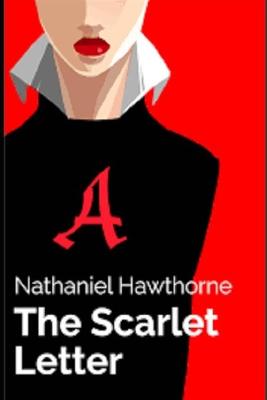Reviewed by Briana @ Pages Unbound on
Subtlety with symbolism is not one of the author’s talents; he is about as understated as the gold and red embroidery on the letter A that Hester must wear upon her chest as punishment for her crime. The reader barely makes it to the second page before finding a description of a rose bush that is followed by the instruction: “It [a rose] may serve, let us hope, to symbolize some sweet moral blossom, that may be found along the track, or relieve the darkening close of a tale of human fragility and sorrow.” Once the scarlet A makes its appearance, it is denoted immediately as a “token of shame.” In case this is not explicit enough, the letter will later flash through the night sky in the wake of a meteor and the narrator explains that Hester’s paramour sees it as a symbol of his guilt. Hawthorne is not entirely misguided in his employment of symbolism; the Puritans did have an affinity for signs themselves and their presence in the book lends something of historical accuracy. However, their overuse is somewhat problematic—and not solely because the readers must begin to question whether. Hawthorne believes them to be as obtuse as he renders his fellow custom-house workers in his autobiographical introduction. Because Hawthorne is so direct presenting some of the meaning of his work, readers might miss the places where he leaves them room for interpretation.
One such instance is his representation of the role of women. Hester’s marriage was oppressive to her youth and beauty, a portrayal that contradicts the expected place of women in both Puritan society and Hawthorne’s own. No happily married woman in the book marks Hester as an exception. Later Hester asks herself:
“Was existence worth accepting, even to the happiest [women] among them? … As a first task, the whole of society is to be torn down, and built up anew. Then the very nature of the opposite sex, or its long hereditary habit, which has become like nature, is to be essentially modified before woman can be allowed to assume what seems a fair and suitable position. Finally, all other difficulties being obviated, woman cannot take advantage of these preliminary reforms, until she herself shall have undergone a still mightier change; in which, perhaps, the ethereal essence, wherein she has her truest life, will be found to have evaporated.”
Her thoughts begin as radical, suggesting some of today’s theories about gender as a social construct, but they end pessimistically and with doubt that change for women is possible. Hawthorne never answers completely the question of what a women’s role or nature is and what should be done about it, leaving it for his readers to muse.
Hawthorne’s second major question is whether society should judge an individual or whether that is God’s job alone. Modern readers, if they are not personally religious, may not see this as a legitimate debate, but its importance to the Puritan theocracy is obvious, and Hawthorne clearly wants his own Christian readers to ask themselves this question. Hawthorne depicts the Puritans as hypocritical, and Hester wonders whether “the outward guise of purity [of her neighbors] was but a lie, and that, if truth were everywhere to be shown, a scarlet letter would blaze forth on a many a bosom.” Her thoughts lead readers to ask themselves whether they too have failed and if they are eager to criticize others in order to draw attention away from their failings. The conclusion of The Scarlet Letter indicates Hawthorne’s own opinions about personal confession and societal judgment, but, again, he does not give a complete answer.
The Scarlet Letter is in many ways very direct, featuring open criticism and obvious symbolism. Hawthorne did not intend to write a didactic work, however. He is interested in raising what he considers essential questions, but he only hints at his own answers, leaving interpretation primarily in the hand of the readers. The combination of strong authorial voice and subtlety make this one classic worth reading.
This review was also posted at Pages Unbound Book Reviews
Reading updates
- Started reading
- 1 January, 2011: Finished reading
- 1 January, 2011: Reviewed
